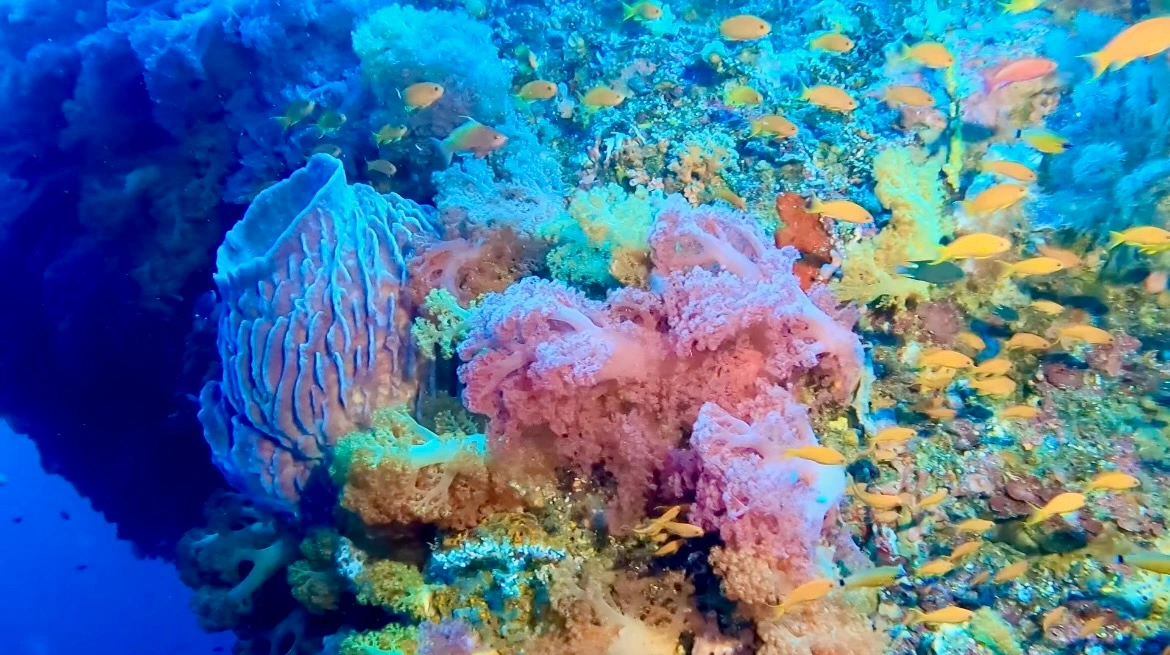Boracay
Dive Sites
Every dive site is a new adventure waiting for you. Join us as we take you to some of the most stunning and memorable underwater destinations in the Philippines.
Diverse Sites
From pristine reefs to ship and airplane wrecks to deep walls and drifts, Boracay offers a little bit of everything, which makes it perfectly suitable for divers of all levels. Boracay is also a perfect destination for underwater photographers, especially macro enthusiasts!
Perfect Conditions
The dive season around Boracay is pretty much year-round. Visibility ranges from outstanding 30-50 meters (100-165ft) in the warmer months to 10-20 meters (33-66ft) during the cooler months of December to February. Water temps are warm throughout the year, ranging from 25C to 30C (78F – 88F)
Seasonal Diving
The two dominant ‘seasons’ are the Habagat and Amihan monsoons. During the Habagat southwest monsoon (July to September) we usually dive on the east side of the island much of the time, where calmer conditions prevail and winds and waves are too strong to dive on the west side.
Diving in Boracay
The dive season around Boracay is pretty much year-round. Visibility ranges from outstanding 30-50 meters (100-165ft) in the warmer months to 10-20 meters (33-66ft) during the cooler months of December to February. Water temps are warm throughout the year, ranging from 25C to 30C (78F – 88F).
Some sites like Balinghai Wall and Diniwid get some nice easy current that allow for gentle to strong drift dives that are good for beginners and training. The Yapak deep wall sometimes has a strong current, which makes it suitable for more experienced divers. The currents are influenced by the tides, so Yapak and Crocodile Island dive sites are only scheduled when the tide is right. Most of the other sites can be accessed at any time depending on the direction and strength of the wind.
The two dominant ‘seasons’ are the Habagat and Amihan monsoons. During the Habagat southwest monsoon (July to September) we usually dive on the east side of the island much of the time, where calmer conditions prevail and winds and waves are too strong to dive on the west side. The rest of the year, when the surface conditions are calm we can dive wherever we want all around the island.
No matter what time of year you visit, there is some great diving to be enjoyed by everyone!
Listed below are just a few of the many beautiful sites around Boracay that we visit regularly.
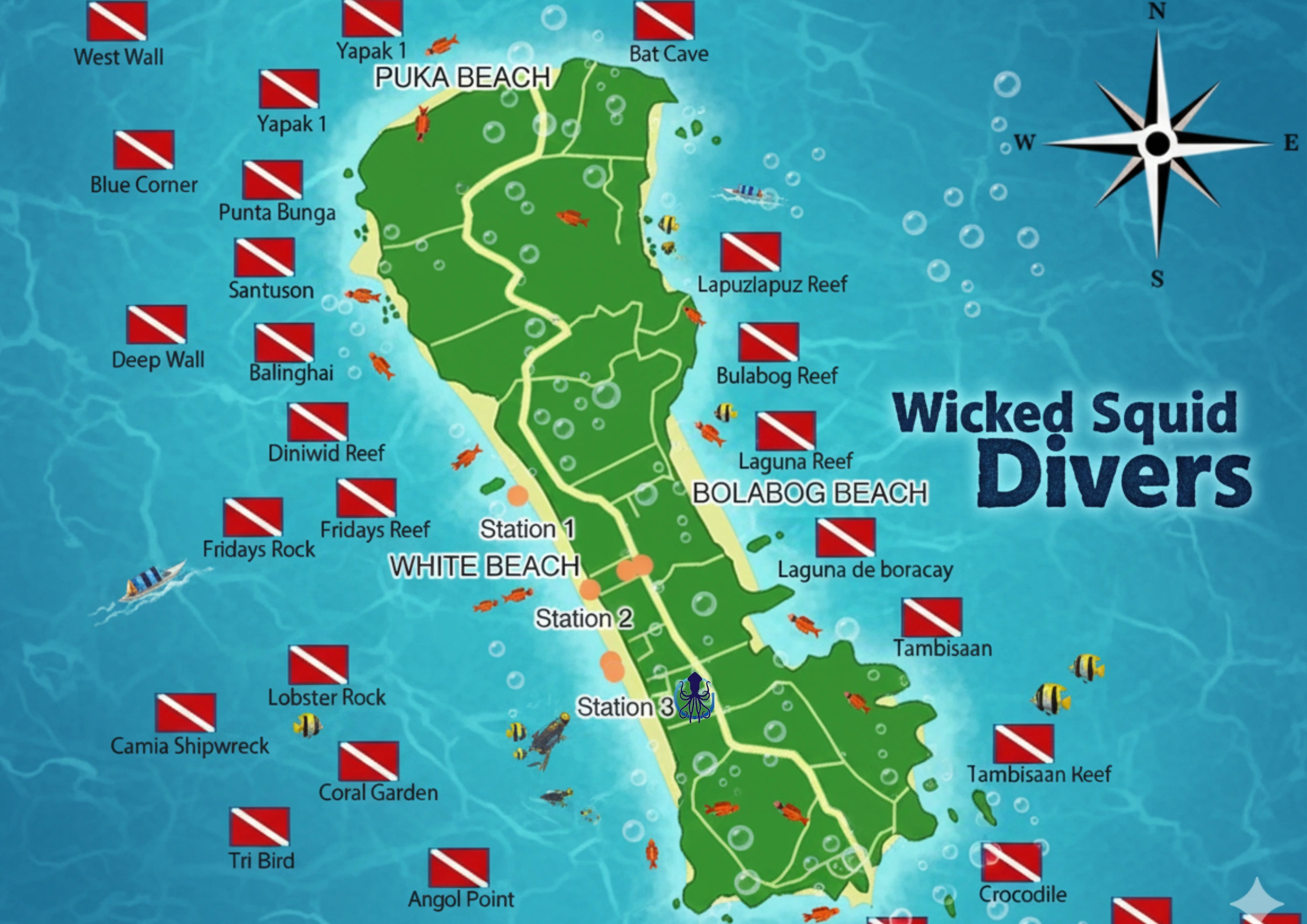
Angol Point
Depth:
6-20 m (20-66ft)
Current:
None to Mild
Experience:
Good for Beginners / Photographers
A shallow, beginner-friendly site that also offers a relaxing dive for experienced divers and photographers. Coral heads rise from the reef, surrounded by swarms of colorful fish, eels, lionfish, nudibranchs, and vibrant anemones hosting clownfish, crabs, and shrimps—making it a perfect introduction to scuba diving.
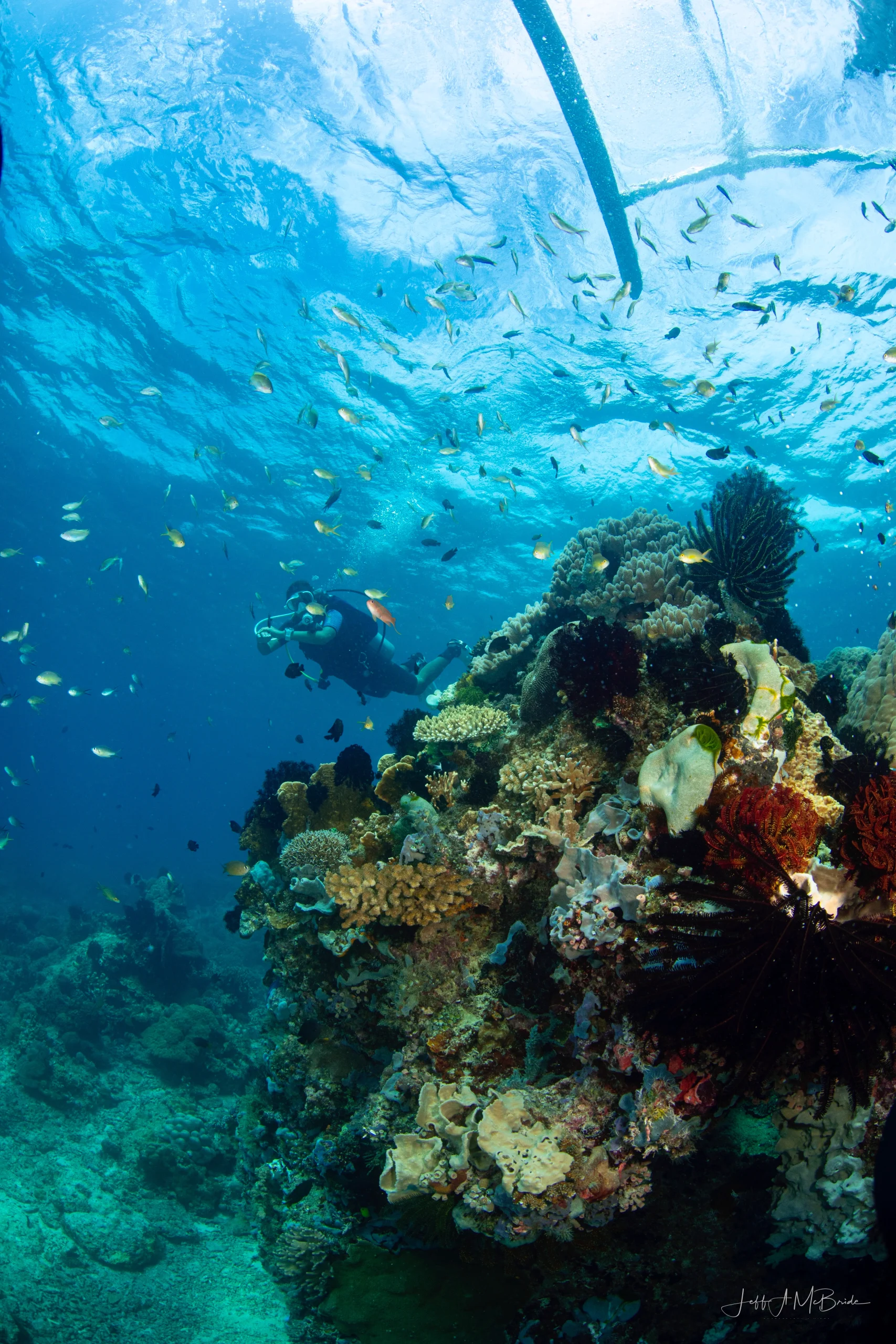
Balinghai
Depth:
10-25 m (33-80ft)
Current:
Mild to Moderate
Experience:
Good for all levels
This site has varied topography starting with a reef plateau at around 12m with anemones and morays, then dropping off to a wall down to 18-25m. At the base of the wall there are beautiful patches of coral well inhabited with fish and critters. Snapper, Green and Hawksbill turtles, Blue-Spot Rays, Giant Frogfish and abundant macro life such as ribbon eels and nudibranchs can be seen here.
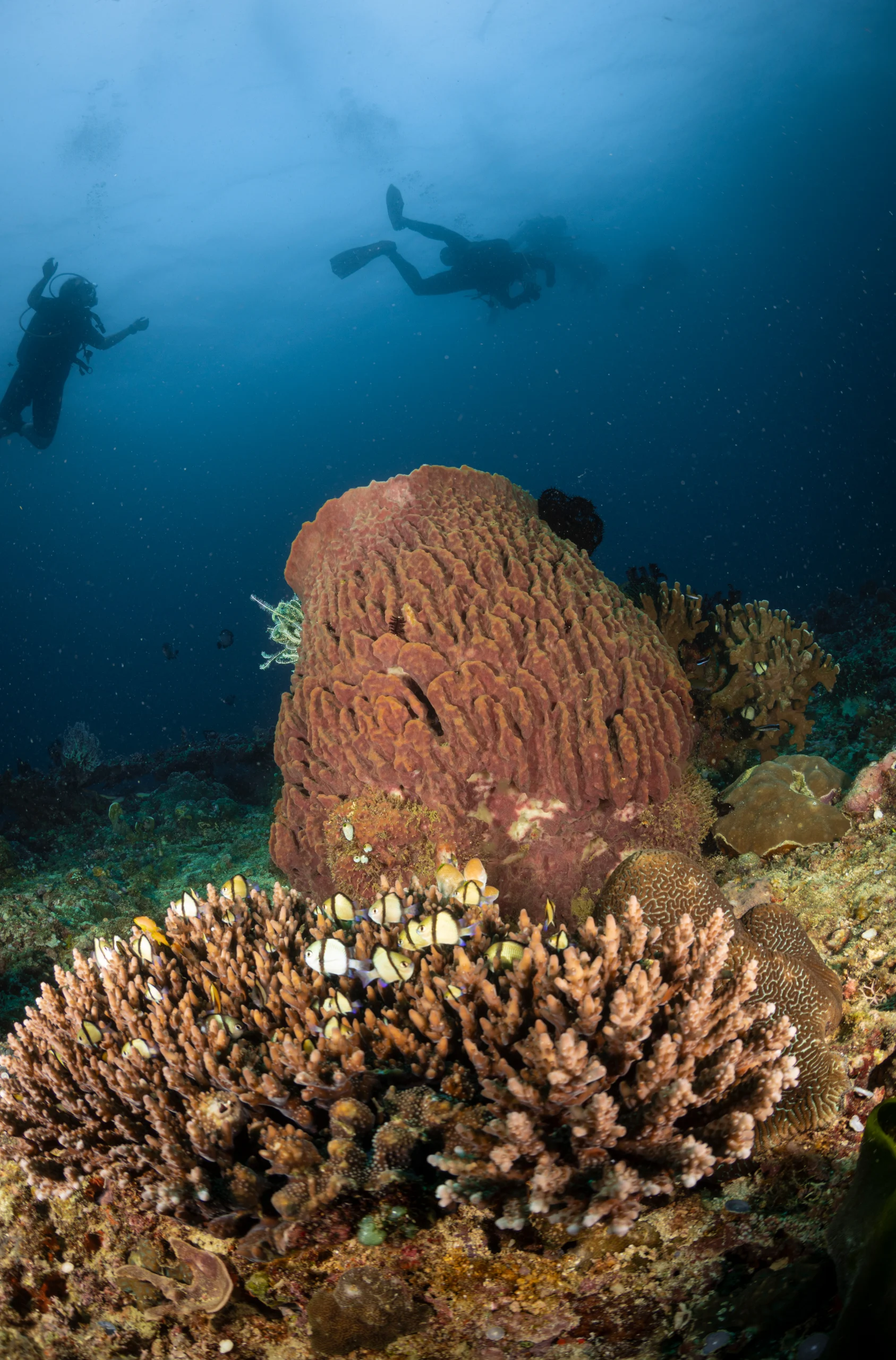
Camia II Wreck
Depth:
18- 30m (60-100ft)
Current:
Mild to Moderate
Experience:
Advanced
The wreck of a cargo ship purposely sunk on 8 January 2001, has become overgrown and inhabited with a large variety of marine life. On the sand at 29m, garden eels and ribbon eels can be found, as well as pygmy seahorses and ghost pipefish a short way from the wreck on the coral bed. The wreck itself, sitting in an upright position and intact, is home to lionfish, snapper, grouper, boxfish, batfish and many others. The engine room is often filled with copper sweepers, while the masts are covered in interesting macro life. Those with a keen eye may spot the resident Frog Fish or even a Blue Ring Octopus!
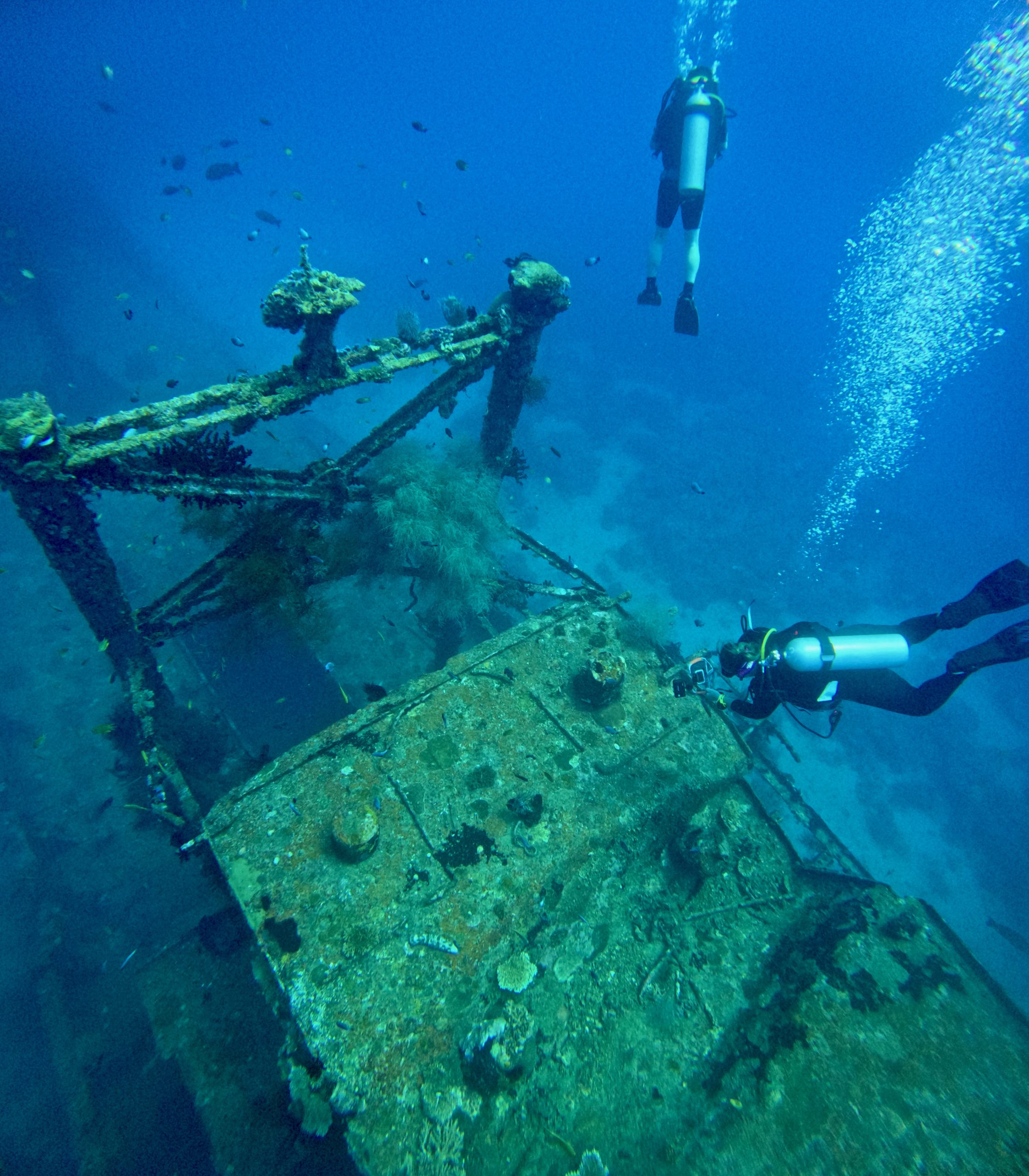
Coral Garden
Depth:
5-10 m (16-33ft)
Current:
None to Mild
Experience:
Good for Beginners / Macro Photography
This site is perfect for beginning divers! This site has varied topography consisting mostly of coral patches, large white sand areas and isolated coral heads. Here we often see a wide variety of marine life including Anemone Fish, Turtles, Ribbon Eels, Lionfish, Puffer Fish and more.
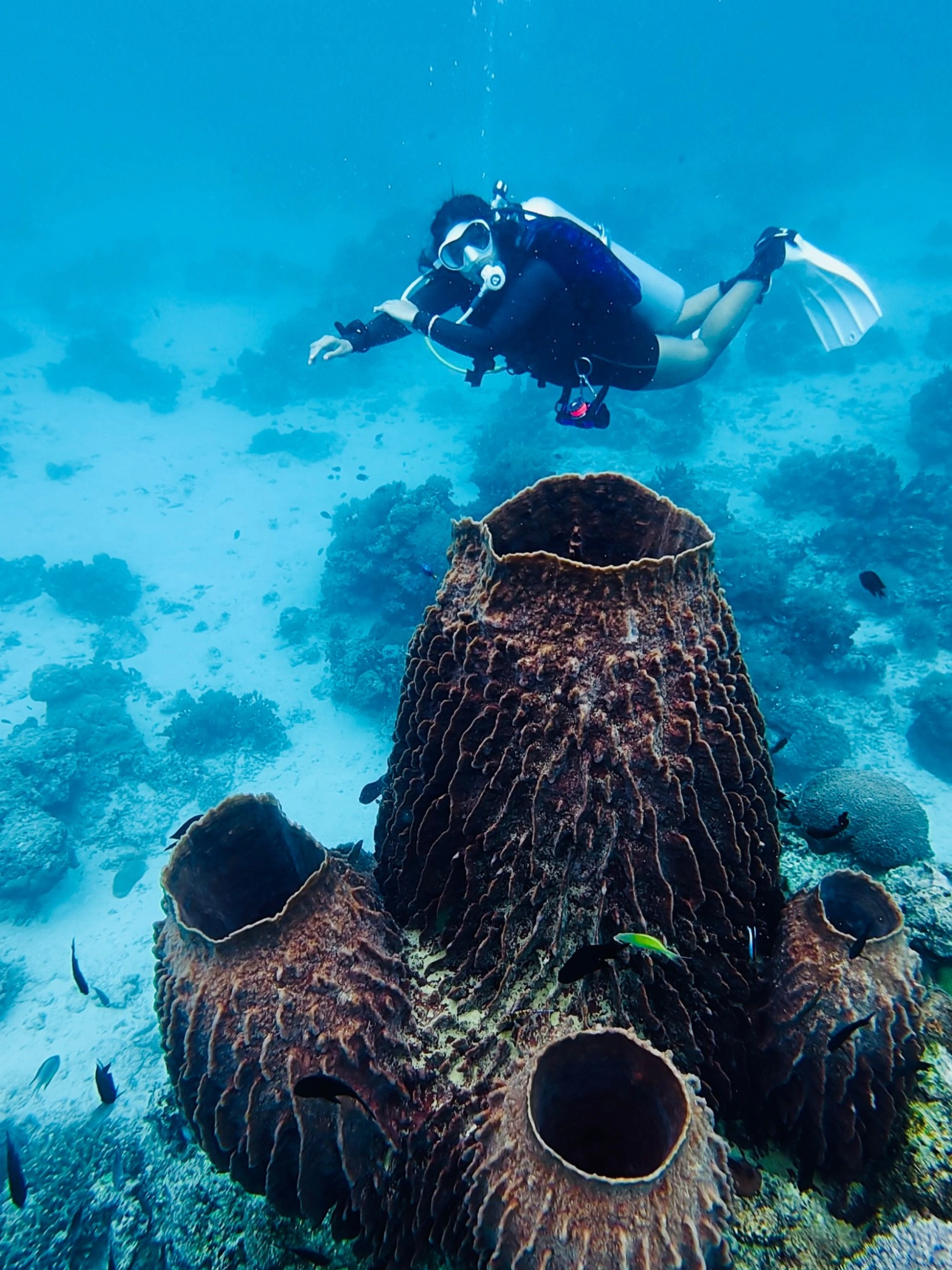
Crocodile Island
Depth:
4-24m (13-80ft)
Current:
Mild to Strong
Experience:
Good for all levels / Macro Photography
One of the top dive sites on Boracay and very popular with all levels of diver. A very healthy coral shelf on top and dropping down a sloping wall with plenty of both soft and hard corals. A massive variety of macro life and full range of fish life. There are several terraces and small caves loaded with fish and other creatures. This site is simply gorgeous, especially on days with particularly good visibility. Keep your eyes open for frogfish on the shelf and in the caves and Pygmy Seahorses on the multiple huge seafans here!
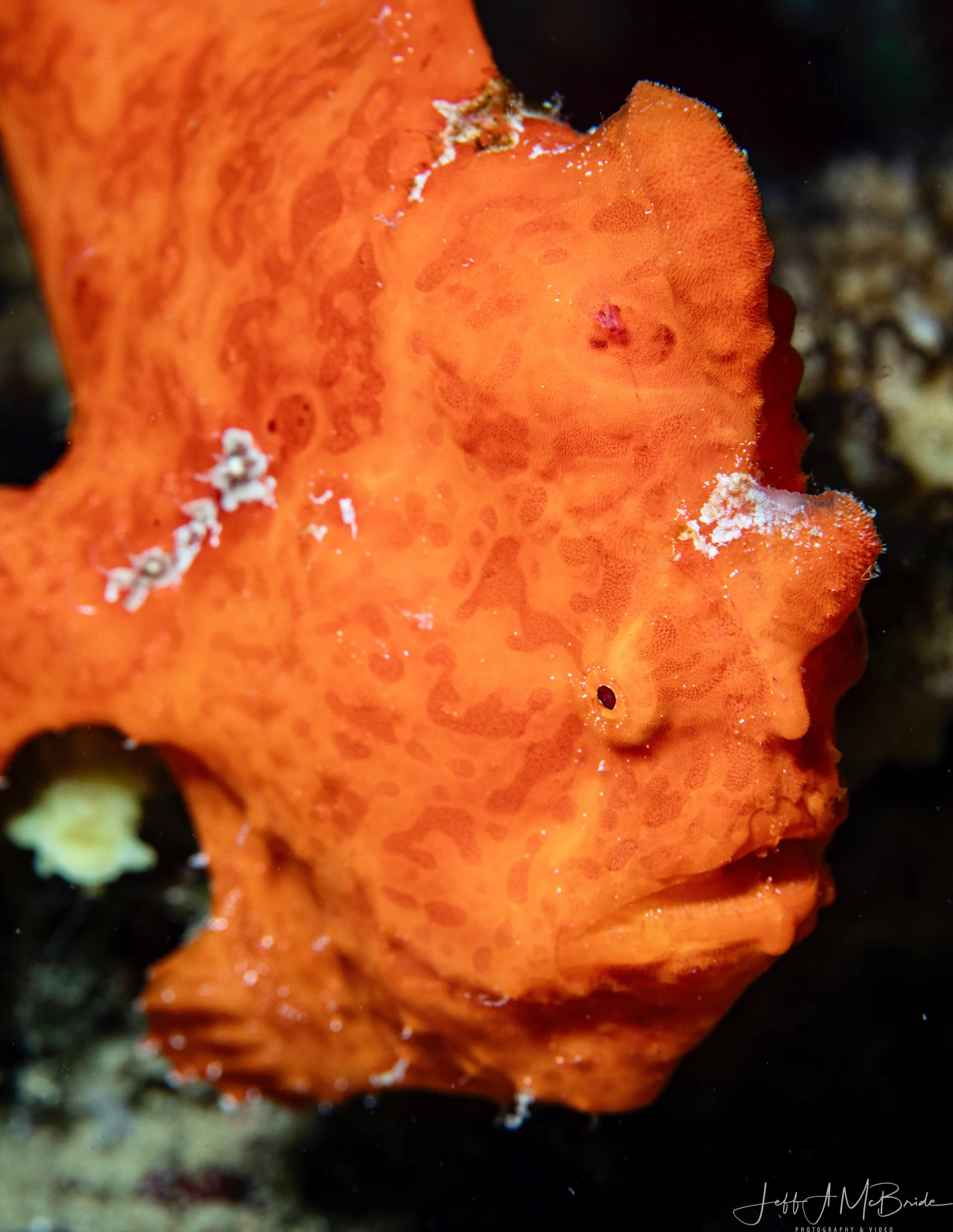
Friday's Rock
Depth:
10-20 m (40-70ft)
Current:
Mild to Moderate
Experience:
Good for all levels / Macro Photography
A large rock rising from 18m to about 10m. Plentiful marine life can be found on the rock itself, on the sandy areas and patch reefs surrounding it, and especially over the top of the rock where spectacular fish displays can be witnessed. Large wrasse, schools of surgeonfish, angelfish and a huge number of damselfish swirl around. Turtles, Sea Kraits and Scorpion Fish are also common to the reef. Don’t neglect the cracks and crevices of the rock and outer reefs, where octopus and mantis shrimp may be found.
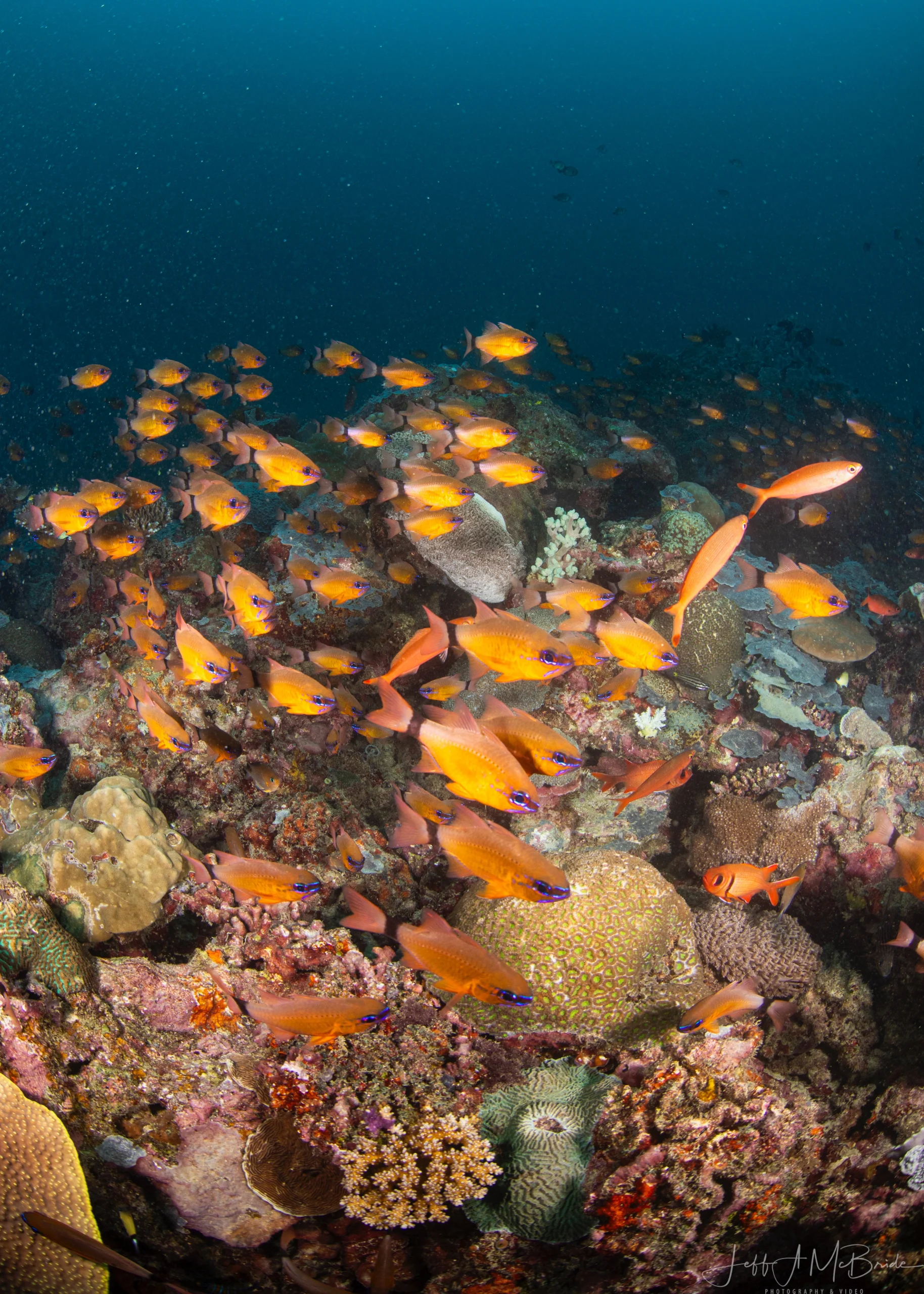
Laurel Island
Depth:
8-22 m (25-73ft)
Current:
Mild to Strong
Experience:
Good for all levels, depending on current
This is a beautiful wall dive with lots of sponges and healthy corals, especially table and soft corals. Many different types of nudibranchs can be found here making it a great dive for macro photographers. Keep your eyes open for blue ribbon eels, morays, lionfish, scorpionfish, boxfish and many others that make their home on this reef. The sea fans on this site are home to pygmy seahorses.
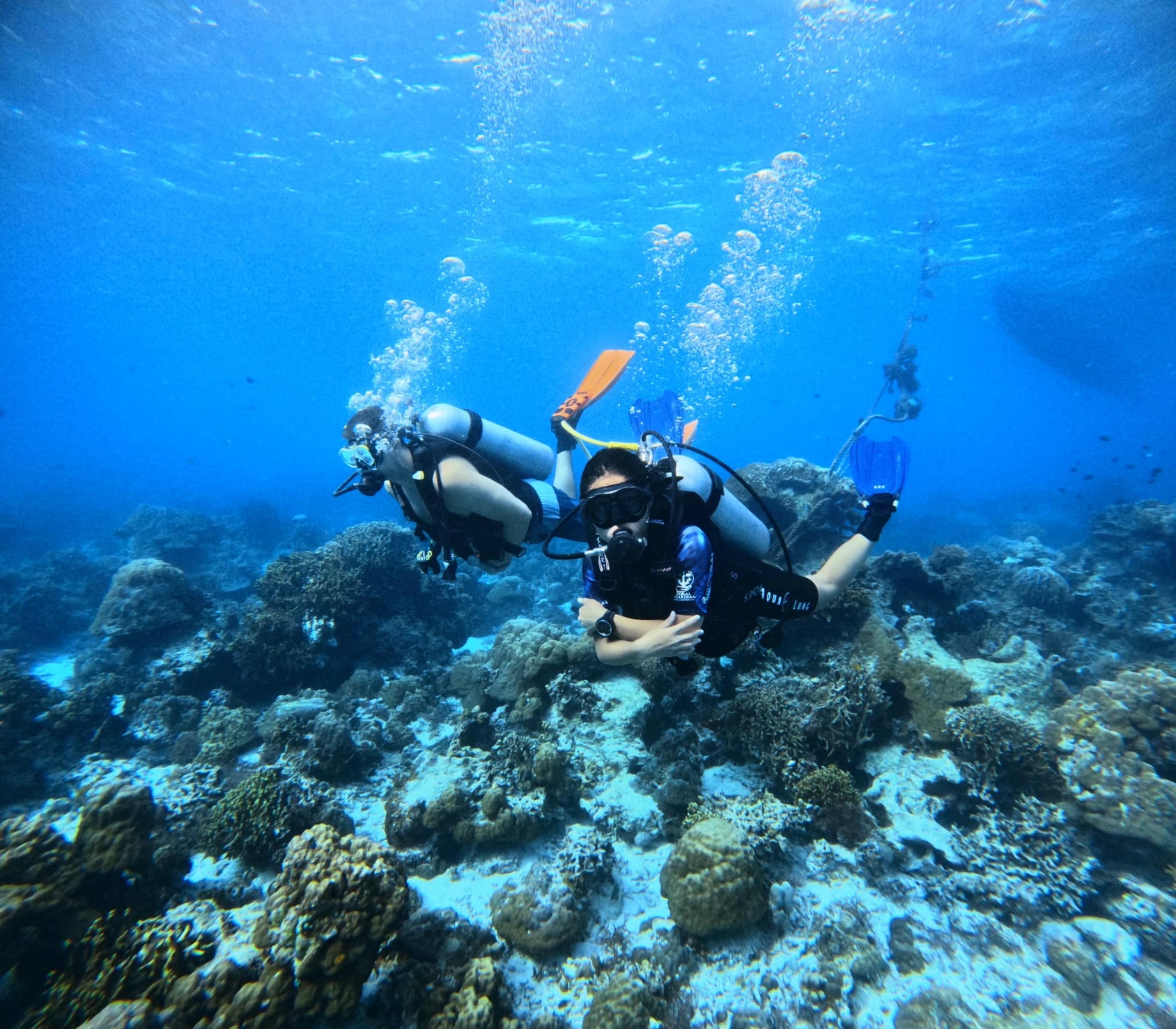
TriBird Airplane Wreck
Depth:
22-30 m (75-100ft)
Current:
Mild to Moderate
Experience:
Advanced
he Tri-Bird is a Russian Yak 40, a 21 meter long, 3-engine airplane with a 25 meter wing span and passenger capacity of 36 that was sunk on March 1, 2012. Home to a wide variety of fish and invertebrates, the wreck sits up-side-down, landing gear sticking straight up and the nose pointed towards the deeper part of the gentle slope. Beyond the wreck, the reef drops off as a steep wall with the possibility of larger marine life coming up from the deep.
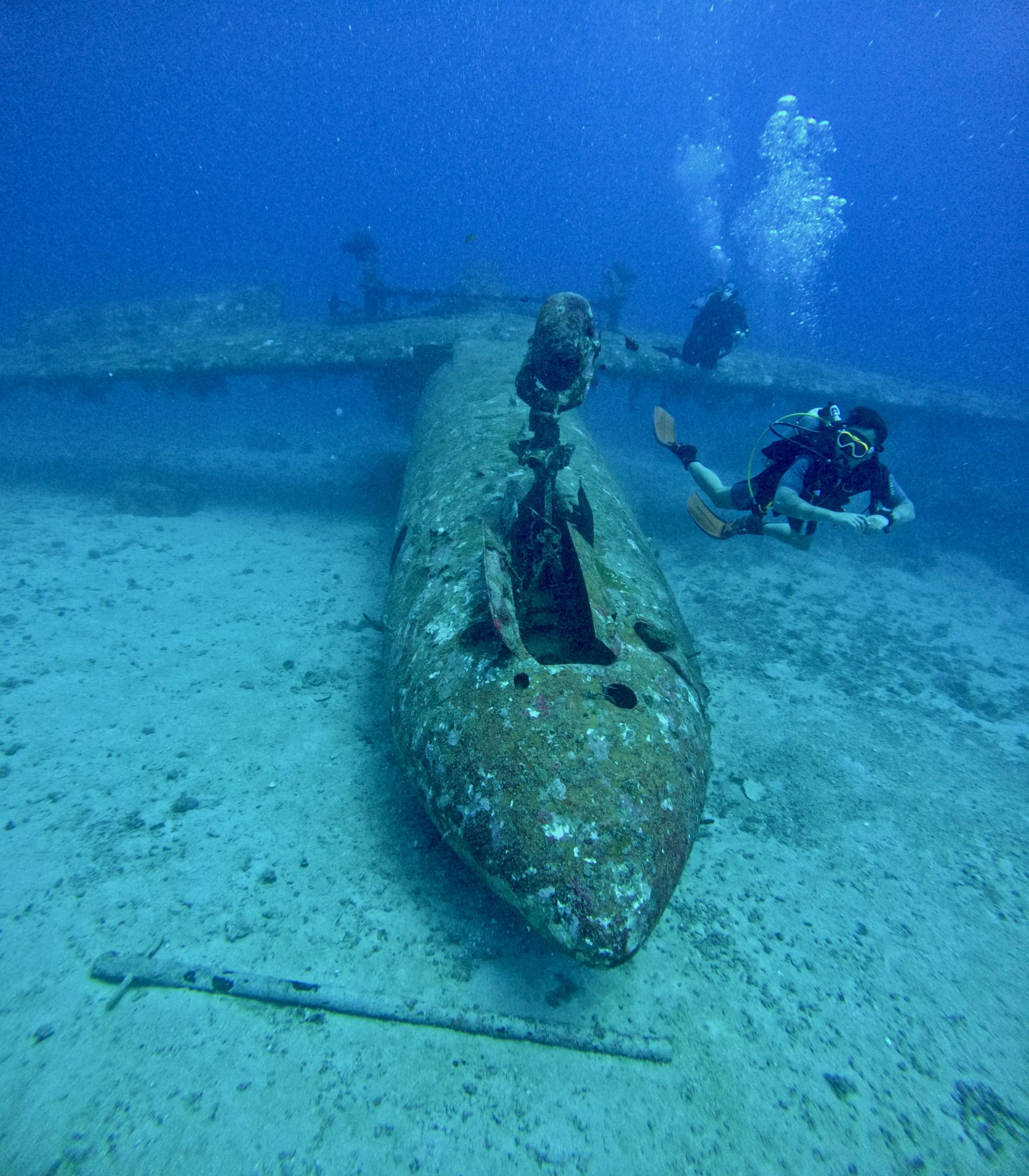
Yapak
Depth:
33-50 m (110-165ft)
Current:
Moderate to Strong
Experience:
Advanced Divers Only
No question this is the top dive site on Boracay and very popular with very experienced and technical divers. This dive requires a prior welcome dive for skills assessment plus demonstrated evidence of deep, and drift diving experience with a minimum of 30 logged dives and at least Advanced Open Water certification.
Negative entry is often required because of strong currents and experience is a must because of possible down currents. It’s a blue water dive until you reach around 30m (100ft) there is no visual reference so not for the faint hearted. This is a spectacular wall dive hosting a huge variety of gorgonian sea fans, whips, barrel sponges and macro life, gorgeous soft corals and a full range of pelagics. White Tip, Black Tip and Gray Reef Sharks make occasional appearances, and Barracuda, Giant Trevally, Oriental Sweetlips, Yellowfin Tuna, Bluefin Tuna and blue Triggerfish are regulars on the wall.
